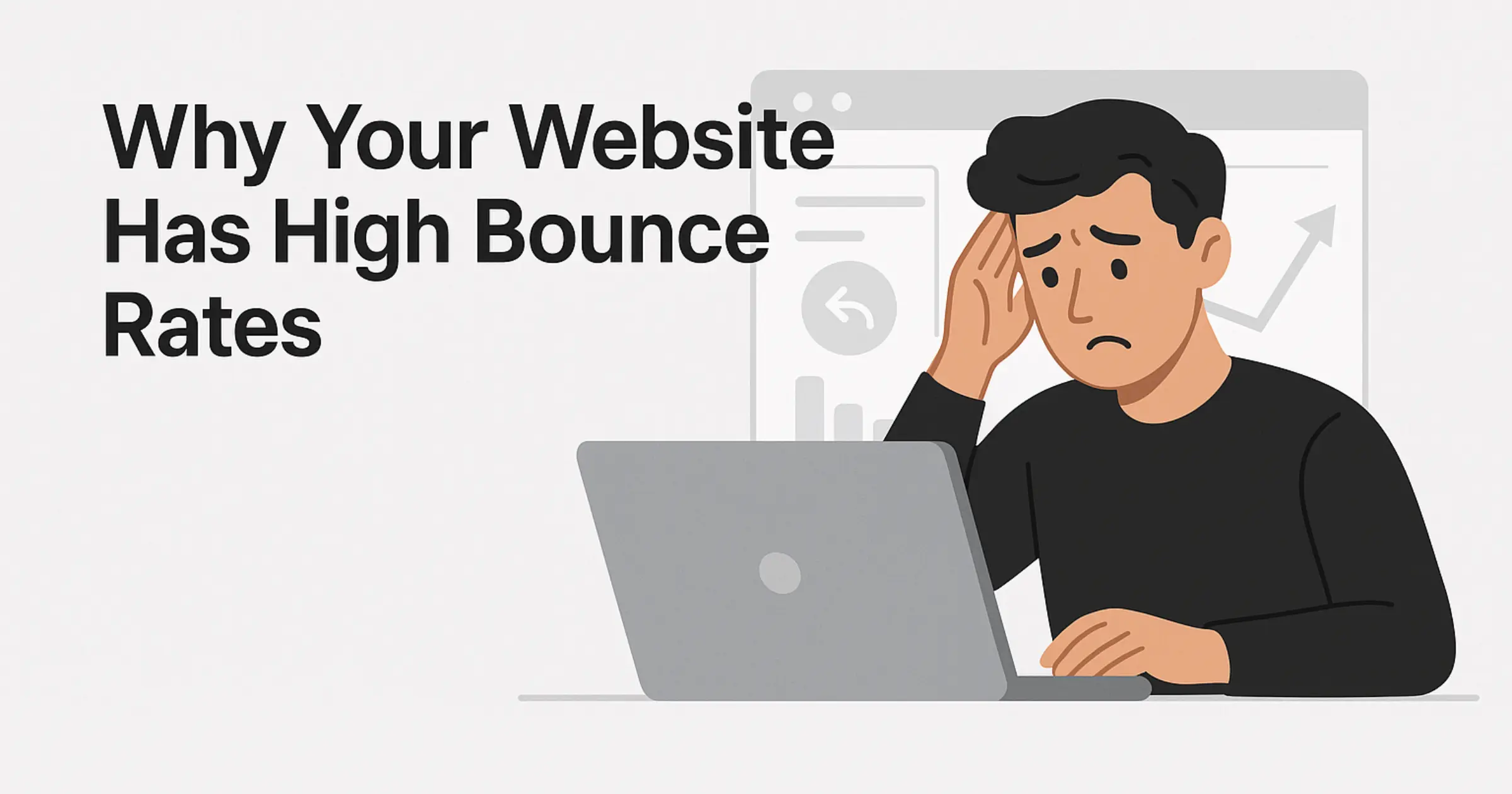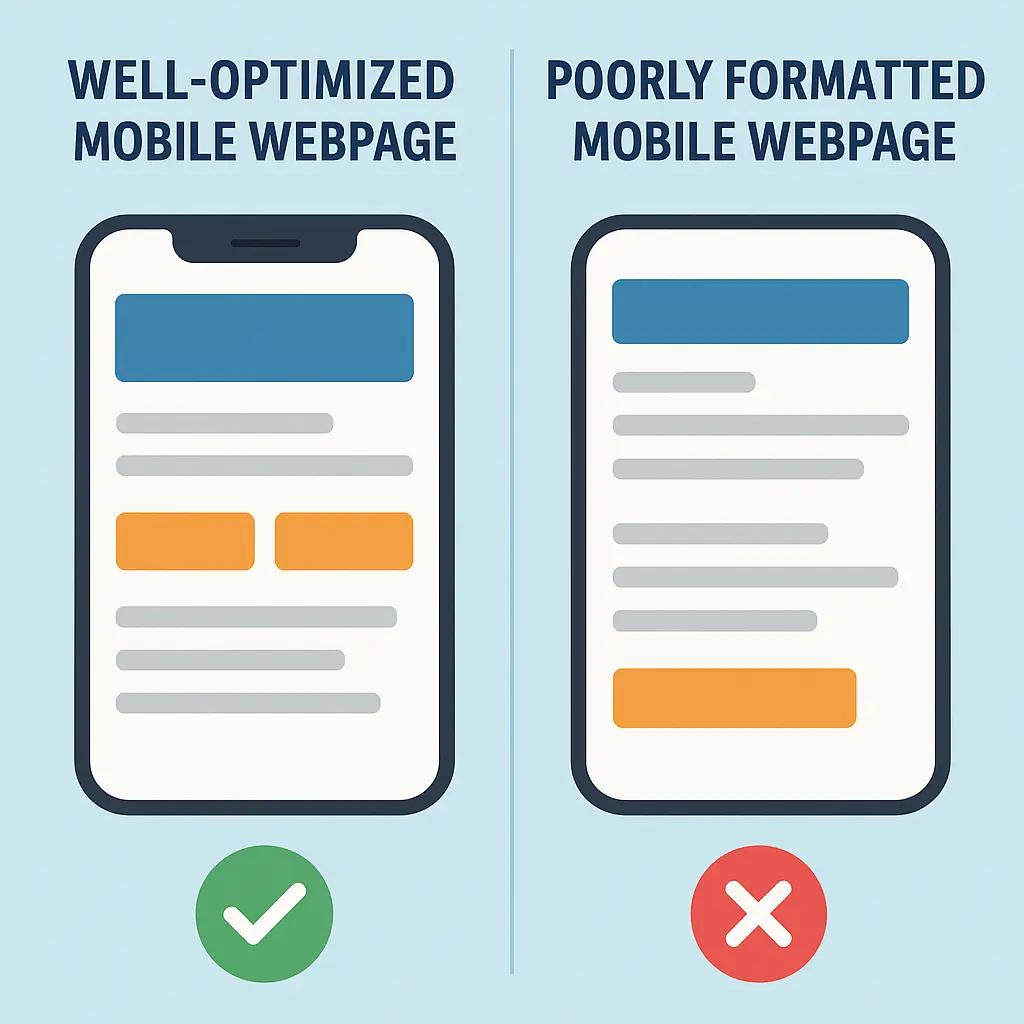
Why Your Website Has High Bounce Rates
Learn what might be driving your visitors away from your website and how to keep them engaged
High bounce rates can feel like an unsolved mystery—why do so many people visit your site, only to leave within seconds? If you’ve noticed that your site’s bounce rate is skyrocketing, you’re not alone. This post dives into the real reasons behind these lost visitors and offers actionable ways to keep them around longer.
In the paragraphs ahead, we’ll shed light on common user experience missteps, technical hiccups, and overlooked elements that drive potential customers away. By the end, you’ll understand how to implement user-focused improvements and why tools like Sitalyze can save you time diagnosing and addressing these issues.
Here’s a quick look at what to expect:
- An in-depth exploration of factors causing high bounce rates
- Insights into how small tweaks can lead to big engagement boosts
- An overview of how Sitalyze evaluates 50+ metrics and helps solve the bounce-rate riddle
Stay tuned as we dig deeper into the problems behind high bounce rates, illustrate real-world scenarios, and share tips so you can start lowering yours immediately.
High Bounce Rates in Context
The Hidden Costs of Losing Visitors Fast
When visitors rapidly exit your site, it’s more than just a numbers game in analytics—those bounces often represent missed leads, reduced conversions, and a diluted brand reputation. High bounce rates can hint at deeper issues such as mismatched expectations, clunky user experiences, or even technical errors that quietly send users elsewhere.
Why Does This Matter for Your Business?
In the digital landscape, the user experience must be seamless and intuitive—competitors are only a click away. When you’re not capturing the user’s attention or delivering on their immediate need, visitors depart at lightning speed. This quick exit has broader implications:
- Wasted Marketing Spend: You might be pouring resources into SEO or paid ads, only for that traffic to slip through the cracks.
- Lower Search Rankings: Search engines like Google track engagement signals. High bounce rates can indirectly hurt your positions in the SERPs.
- Brand Perception: If your site doesn’t load correctly or feels outdated, it reflects negatively on the professionalism of your business.
Positioning Sitalyze in the Bigger Picture
High bounce rates aren’t always obvious. They can stem from performance flaws, misaligned content, or even subtle design quirks. Sitalyze tackles these problems by running your site through 50+ metrics—from mobile responsiveness to SEO best practices—and consolidates the insights into a 30-page report. You’ll see exactly where potential customers might be bouncing and why.
If you’re interested in a comprehensive review, check out our Sample Report to see how thorough these audits can get.
By understanding the root causes of high bounce rates and using the right analysis tools, you can start bridging the gap between a first-time visitor and a long-term customer.
Uncovering the Main Reasons Behind High Bounce Rates
Performance Pitfalls
One of the most common reasons for quick exits is slow loading times. Tools like PageSpeed Insights (pagespeed.web.dev) and GTmetrix show just how critical each millisecond is. Users won’t stick around if your content takes more than a few seconds to appear. Sitalyze offers performance checks as part of its comprehensive report, helping you pinpoint sluggish scripts, large images, or server issues.
Mobile Frustrations
With more users browsing on mobile devices, a site that isn’t optimized for various screen sizes will inevitably see high bounce rates. Navigation issues, unresponsive layouts, and text that’s too small to read can drive away mobile visitors instantly. Ensuring your site is mobile-friendly isn’t just good practice—it’s essential.

Content Relevancy
Sometimes the issue isn’t technical at all. If your page promises something in its title or meta description but delivers unrelated or superficial information, visitors will leave. Detailed, value-packed content that directly addresses users’ questions can significantly reduce bounce rates. Consider reviewing your site’s main pages to ensure they match user intent. For more pointers, you might explore our related post on How to Conduct a Complete Website Audit.
Intrusive Ads and Pop-Ups
Few things repel visitors faster than intrusive pop-ups or overwhelming ads. While marketing tactics like pop-ups can capture leads, poor timing or excessive frequency can do more harm than good. Balance is key—limit the usage to critical moments or crucial calls to action.
Poor Design and Navigation
Even if your site is fast and has good content, confusing navigation or cluttered layouts can send users packing. Simplify the menu, keep clickable elements consistent, and make essential information easy to find. If your bounce rate is disproportionately high on specific pages, do a quick user journey analysis. Are your calls to action clear? Is the next step in the funnel intuitive?
By breaking down each of these components, Sitalyze scores your site in categories like “Page Experience,” “SEO,” and “Conversion Funnel.” This bird’s-eye view helps you focus on the weakest areas first.
Real-World Examples and Data-Backed Results
Success Story: Slashing Bounce Rates by 40%
A mid-sized e-commerce retailer approached us struggling with a bounce rate hovering around 70%. Their page took nearly seven seconds to load, leading to countless missed sales. After using Sitalyze to generate a 30-page audit, they discovered the bulk of the problem lay in unoptimized images, heavy third-party scripts, and a few neglected mobile design issues.
Within weeks, they:
- Compressed and properly formatted product images
- Deferred unnecessary scripts
- Simplified mobile navigation
The result? Their average bounce rate dropped to around 42%—and their conversion rate rose accordingly. Page load time improved to under three seconds, reinforcing the idea that every second counts in user retention.
Another Example: Content Relevance in Action
A B2B SaaS company noticed unusually high bounce rates on their blog posts, despite drawing in ample traffic. Sitalyze revealed a disconnect between their targeted keywords and the actual post content—visitors simply weren’t finding the information they expected. By updating keywords, headlines, and clarifying their value proposition, the bounce rate on those pages fell by over 30%.
If you’re curious about how our audits can help your site specifically, consider requesting a Sample Report or explore our other Blog Posts for more insights.

Real-life examples like these reinforce the importance of investigating every aspect of user experience, from site speed and design to search intent alignment. High bounce rates often signal a deeper need for holistic optimization, not just surface-level fixes.
Practical Tips to Reduce Your Bounce Rate
1. Optimize Loading Times Immediately
- Use Tools: Check performance with free resources like PageSpeed Insights (pagespeed.web.dev) or GTmetrix.
- Minify Assets: Compress CSS, JavaScript, and images.
- Leverage Browser Caching: Store data so returning users don’t have to re-download everything.
2. Align Content with User Intent
- Review Keywords: Make sure the terms you rank for accurately reflect the actual page content.
- Offer Real Value: Solve the user’s problem or answer their question in a clear, direct way.
- Avoid Keyword Stuffing: Don’t load your page with irrelevant terms to rank higher; it leads to quick bounces.
3. Focus on Clear Navigation
- Organize Your Menu: Group related pages and categories logically.
- Create a Visible Search Bar: For content-heavy sites, a site-wide search is invaluable.
- Highlight CTAs: Make it obvious where visitors should click next.
4. Be Strategic with Pop-Ups and Ads
- Limit Frequency: Overusing pop-ups can drive people away.
- Time Them Properly: Show them after a user has spent a bit of time on the page, not the moment they arrive.
- Ensure Relevance: Tailor your pop-ups to the context of the page.
5. Test, Iterate, and Monitor
- Watch Analytics Regularly: Use tools like Google Analytics to keep tabs on bounce rate changes.
- A/B Test Changes: When you modify your site, split-test different versions to see which works best.
- Use Sitalyze for Comprehensive Insights: Beyond performance, we evaluate SEO, accessibility, and even conversion funnels. Regular audits can help you catch emerging issues before they sabotage your bounce rate.
Dos and Don’ts:
- Do prioritize mobile responsiveness and site speed.
- Do keep content valuable and on-topic.
- Don’t bombard visitors with irrelevant ads or pop-ups.
- Don’t ignore your analytics—data tells you where to optimize next.
These are not one-time fixes; they’re ongoing strategies. As new trends emerge and your audience evolves, routine check-ups with Sitalyze or similar tools will keep you ahead of the curve.
Wrapping Up: Keep Visitors Engaged and Watch Your Bounce Rates Fall
Recap and Main Takeaways
High bounce rates can stem from various factors—slow load times, irrelevant content, confusing layouts, or misaligned user expectations. By addressing these core issues and focusing on user experience, you can transform quick exits into meaningful interactions. Remember to keep tabs on performance metrics, periodically refresh your content for relevance, and be strategic about how and when you display pop-ups.
Final Thoughts
While it’s easy to view bounce rates as a purely technical concern, they often reflect a deeper, user-centric challenge. Visitors want to immediately see that your site can meet their needs—otherwise, they’re gone. Invest in quality, clarity, and speed, and your bounce rates will likely decline as a result.

Call-to-Action
Ready to dive into a full audit of your site? Sign up for Sitalyze and generate a 30-page report packed with specific recommendations and scores across 50+ metrics. If you have any questions or want to explore how Sitalyze can fit into your workflow, feel free to Contact Us. With the right insights, you can keep visitors engaged and lower your bounce rates—one improvement at a time.